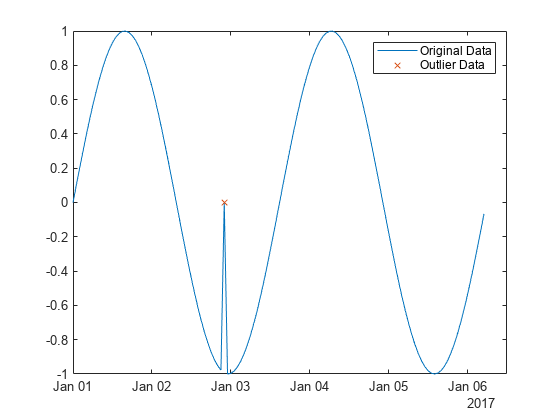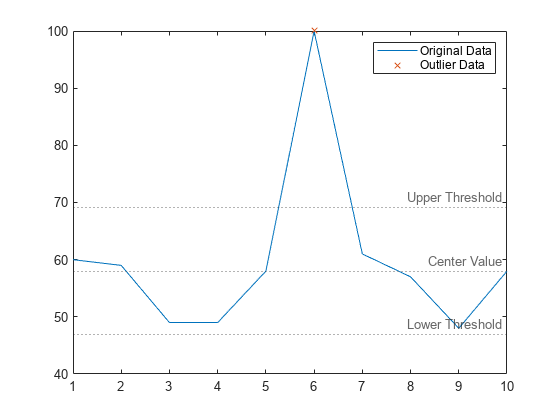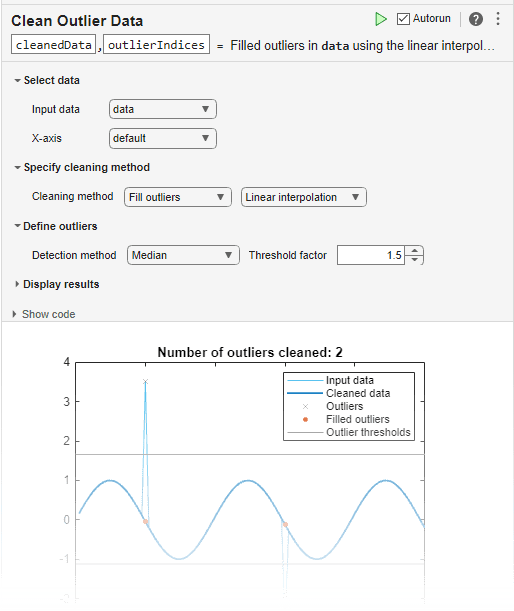isoutlier
查找数据中的离群值
语法
说明
TF = isoutlier(A)A 的元素中检测到离群值时,该数组中与之对应的元素为 true。
如果
A是矩阵,则isoutlier分别对A的每列进行运算。如果
A是多维数组,则isoutlier沿A的大小不等于 1 的第一个维度进行运算。如果
A是表或时间表,则isoutlier分别对A的每个变量进行运算。
默认情况下,离群值是指与中位数相差超过三倍经过换算的中位数绝对偏差 (MAD) 的值。
您可以通过将清洗离群数据任务添加到实时脚本中,以交互方式使用 isoutlier 功能。
TF = isoutlier(___,Name,Value)isoutlier(A,"SamplePoints",t) 相对于时间向量 t 中的对应元素检测数组 A 中的离群值。
示例
输入参数
名称-值参数
输出参量
详细信息
替代功能
参考
[1] NIST/SEMATECH e-Handbook of Statistical Methods, https://www.itl.nist.gov/div898/handbook/, 2013.
扩展功能
版本历史记录
在 R2017a 中推出另请参阅
函数
rmoutliers|isbetween|ischange|islocalmax|islocalmin|filloutliers|ismissing




